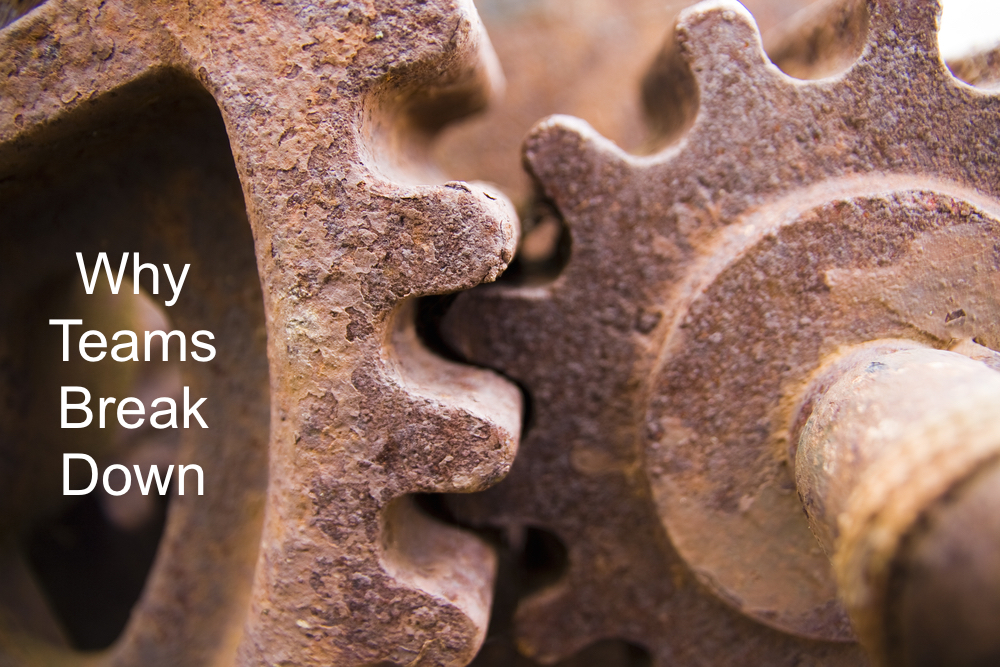In my last post, I admitted that I am a total factory junkie. I love industrial machinery, especially automated assembly lines. But today, the gears, pulleys, and levers of the industrial age have been replaced by the human machine of the knowledge age—the team. In that post, I shared three of the amazing functions of the modern team machine: homogenization, filtration, and acceleration. Check it out here.
I’m a big believer in the power of teams. As a researcher, I studied teams that created breakthrough innovations in the high tech field. As a consultant, I’ve had the privilege to work with great teams leading dynamic organizations. In my own organization I work on one of the most amazing teams one could ever imagine. But I know from experience, and from hearing from many of you, that these high functioning teams are the exception, not the majority.
For many people, teams don’t seem like well-oiled machines at all. Instead, they are clogged, rusted, run-down jalopies that barely get the job done. Often, they make the job even slower than if one had done without. For the most part, it’s because we treat our teams as though they’re indestructible when really they need ongoing maintenance like any other machine. Here are a few of the things that go wrong when you don’t invest in the upkeep of your team.
- Friction. Machines are very susceptible to the damage of friction as parts grind on one another and create wear and tear. In teams, this friction comes from different interpersonal styles, poor communication skills, and unhealthy conflict. The cause is different, but the result is the same, the friction wears team members down and prevents them from making the kind of connection required for effective teamwork. You need to lubricate the conversation with better understanding and appreciation of the different parts your teammates play.
- Lack of contact. In a machine, when the parts don’t connect properly, it can’t do its job. Gears have to touch to create acceleration. In a team, this lack of connection can exist in a new team, when members don’t know how to communicate with one another. It can also come in a team that is worn down by too much friction where members withdraw and contribute as little as possible to get by.
- Stress and strain. When outside forces exert the wrong kind of pressure on a machine, the stress and strain can affect performance (I learned this when my boat propeller touched a rock on the bottom of the lake-woops.) The same is true of the team. Many teams these days are under tremendous stress from above and considerable strain from other competing teams. The result is a team that gets pulled off course and a priority list that gets warped beyond recognition.
I stand by my assertion that the team is an amazing machine. I just wish people would take care of their teams, a quart of oil every once in a while, people! If we expect high performance, we need to invest in ongoing maintenance. Has your team been for a 3,000 mile tune up lately? Maybe it’s time.
Further Reading
Is your Team Prepared for Conflict?
